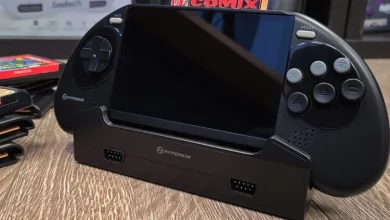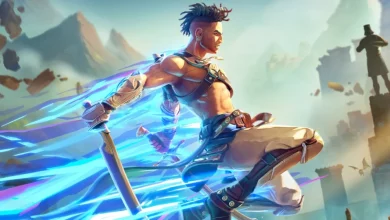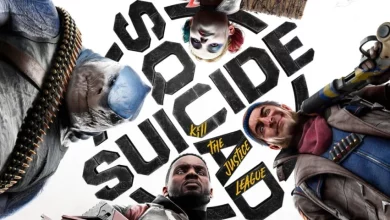Suicide Squad: Kill The Justice League has finally been released on all platforms, and today we are going to talk about everything it has to offer in detail. Between the mixed opinions and the new identity that Rocksteady Studio (developer of the Batman Arkham series) is presenting to the game, it seems that the level of waiting for the studio’s new project 8 years after the release of Arkham Knight is high. Here’s our Suicide Squad: Kill the Justice League review.
The announcement of the Gotham Knights and Suicide Squad games in 2020 was an unexpected shock for me, as WB revealed its intention to move significantly towards using the titles it owns to provide different games, but this was the view from the outside only, but upon closer inspection These games seemed to me to be games whose goal is to get the most money based on the names of the characters that appear in the games. In the end, the idea of a game for Suicide Squad characters is a more attractive idea than a cooperative group game with unknown characters.
Let’s be clear from the beginning, I do not hate service games and I admit that most of them start modestly and then come back to prove themselves later, but I am against the trend that some game companies are still following by creating a service game from scratch, taking advantage of the name and reputation built by the large development studios, and the names of the characters that are being developed. Dragging her into those projects with a dark future. I know this from previous experiences I have lived, and games that I was excited about and disappointed, such as Marvel’s Avengers from Crystal Dynamics, Anthem from Bioware, and others, and Suicide Squad is not much different for several reasons. Let’s start diving into the details
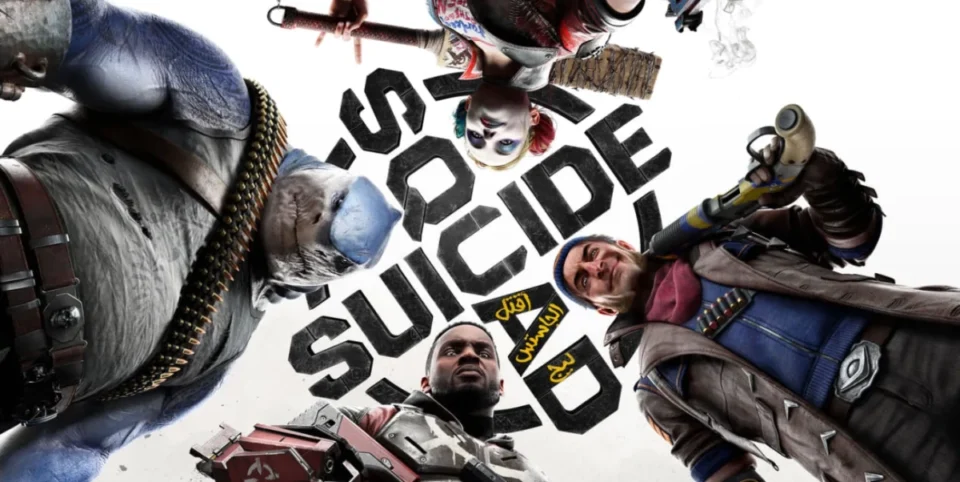
Story (no spoilers)
The story of the game revolves around the enemy Braniac’s invasion of the planet Earth, and one of his abilities is that he can control the minds of opponents and make them work for him. That’s exactly what he did to the Justice League. A group of superheroes who protect planet Earth from external dangers, and his goal is to use them to build an army of humans that he also controls, to transform planet Earth into a new version of his destroyed planet, “Culu.”
A group of “the most dangerous criminals” is gathered in a secret, immoral special forces squad that works directly under the command of the President of the United States of America, led by Agent Amanda Waller. It includes 4 of the state’s worst criminals, and the reason for this is that they are dispensable figures, and they are recruited to serve as agents. With the “Argas” security agency by planting bombs in their heads that will explode if they disobey Waller’s orders or die. This plot is almost the same as the plot of the films of the same characters that were released in 2016 and 2021 respectively, but with the difference that the danger this time is the Justice League, which is something frankly more attractive than the films, but this was implemented successfully?
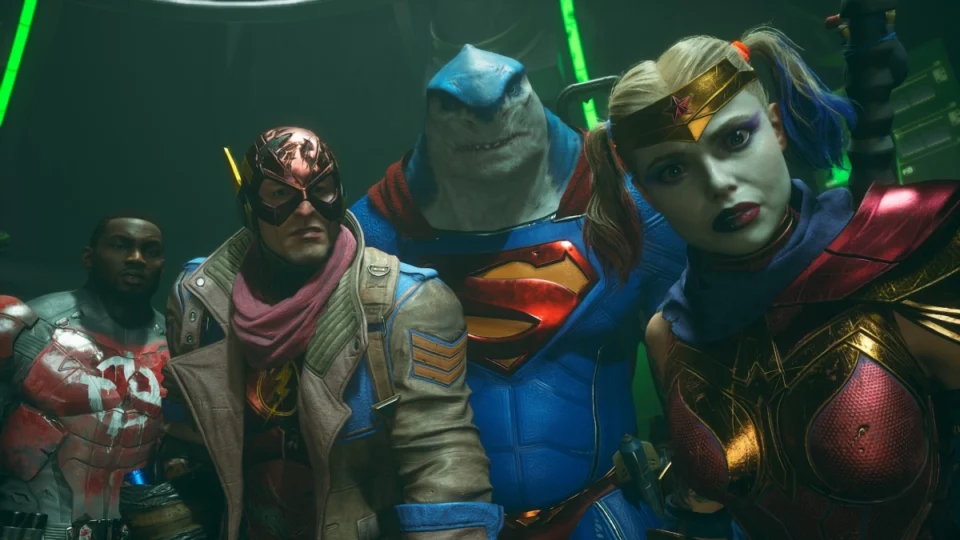
The story lasts for 10-15 hours, and in the first half things were going well and it seemed to me that the story might be promising. The interest in the characters’ dialogues was excellent throughout the events, and the lead-up to the Justice League fights (the boss fights) was enthusiastic and increased my level of anticipation for these fights, especially the first encounter with each leader. I think the first encounter with Batman and Green Lantern is one of the best in the Rocksteady games overall. The problem for me was in the last third of the story, which I will simply describe as “rushed,” but this defect is present in any story game. What can make me tolerate it and ignore it, or at least reduce its impact, is for the gameplay to be fun and diverse in a way that carries my experience to the end of the story, and even beyond. But unfortunately. This did not happen here, and with a service game that is supposed to last for thousands of hours, I started to get bored after only 10 hours!
But there are positive aspects of the story, including the level of wonderful cinematic narration, which learned greatly from the mistakes of Gotham Knights. The narration this time is great, and the cinematic clips have the quality required by Rocksteady games. The relationship between the characters is one of constant riots and arguments, from which many funny situations emerge. Facial expressions were also given great attention to make them express at all times the characters’ feelings and what is going on in their minds. I particularly liked the appearance of the characters Harry Quinn and King Shark, as their roles were played perfectly, to the point that makes me claim that this version of Harley Quinn is better than the version. Margot Robbie
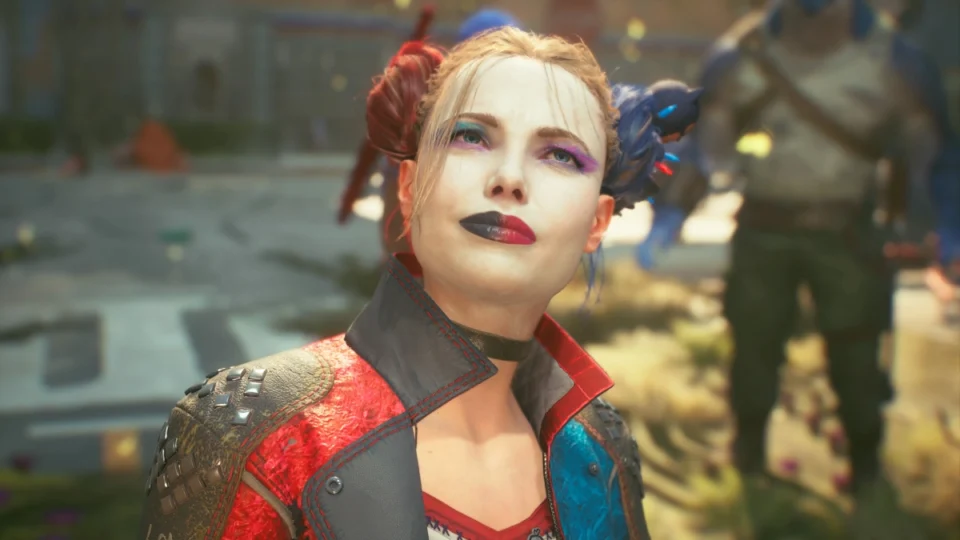
The developer studio made a big mistake in linking the game to the Arkham series and making it a continuation game because it dealt with the character of Batman and the legacy of the wonderful series that it presented to him with a great deal of underestimation and illogicality. Batman in the game appears as a commentator on the battles, and only follows them from the operating room and only participates in them when the suicide squad consisting of four characters with limited intelligence comes to his doorstep, and only then does he fight them. I did not feel any real danger or threat (even as a fake feeling) from the Justice League characters, with the exception of perhaps Superman, even though the developer is the same studio that created the Batman character in its previous games.
Play style
My biggest problem with the game is the gameplay. Although it is enjoyable in some of its moments, I can’t help but point out that its foundation has major and pivotal flaws that make it difficult to build upon successfully. I mean, who had the idea to have a game based on four enemies with special firearms abilities? The strangest thing is that the alien enemies also use firearms, and do not possess innovative capabilities of any kind. This has been frustrating to me ever since the game was announced, and it’s still frustrating now after trying it out because it’s actually proven to be the experience’s biggest flaw.
I have no explanation for this design choice other than that it serves the game to become a service game that can be applied with a progression system based on completing the largest number of missions (Grind) to obtain better equipment. The problem is that the abilities of these characters are only exploited in limited strikes that they obtain through… Skill tree. Other than that, it is a third-person shooter that depends on the power of your weapon and not on the character you control.
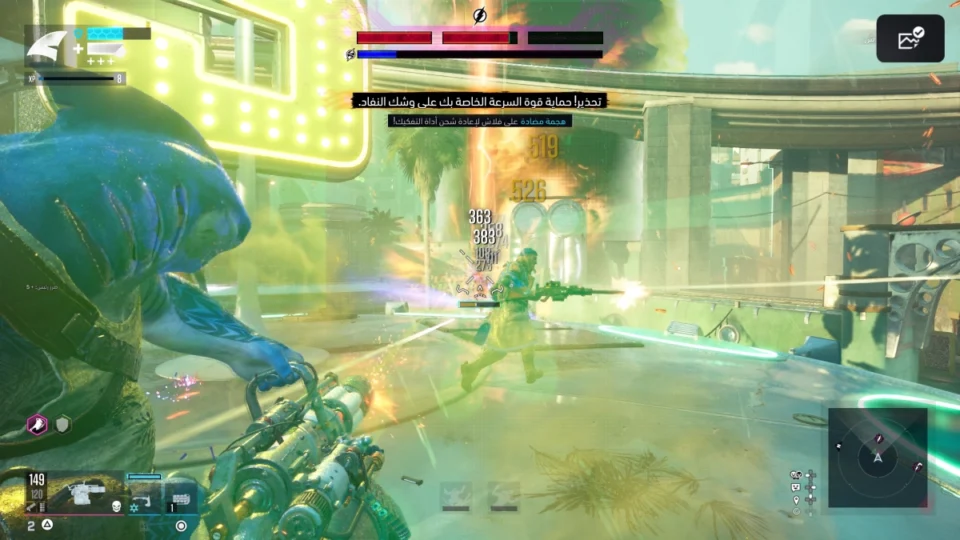
There is also a significant lack of diversity of architectures. When I saw the trailers, I imagined that there was a special structure for each character, for example that Deadshot would be the professional sniper, who has abilities and tools to help him do that, while King Shark would be the most violent character, and Harley would be the character who relied most on acrobatics and bombs, for example. But this did not happen. All tools are tools shared by all characters. They all have the same effect. This was disappointing, especially since the characters had great potential that could have been exploited more. The physiques of the four characters, for example, are significantly different, but this had no effect on the gameplay.
But on the positive side, the navigation system is fun to write and design, with each character stealing a Justice League tool to use for transportation, with the exception of King Shark, who has innately high jumping abilities, similar to navigation in the Hulk games on PS2. Enjoy playing as Deadshot (who travels as a Jetpack) and King Shark, followed by the other characters, Harley (who travels as Batman) and Boomerang (who travels as the Flash).
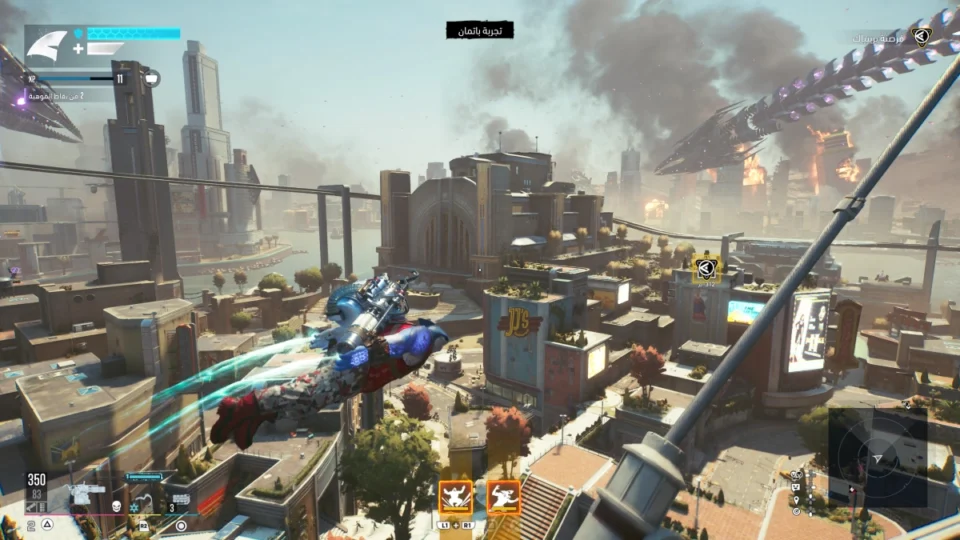
The map is divided into story missions and “support” missions, all of which are similar in design. There are missions in which you collect detained people and place them in a vehicle driven by one of your supporting characters in order to help them escape. There are missions in which you are required to control certain points for a period of time and defend them against enemies, and there are missions that require you to eliminate enemies in completely specific areas. The city design helps make battles very dynamic, as it is a multi-level vertical design, and enemies are always randomly distributed over the environments, forcing you to constantly jump and move between roofs and buildings, and this was one of the most enjoyable aspects of the game. But it’s not helped by the almost lack of enemy variety, as they don’t introduce any new types from start to finish except for one type that has flash abilities, but it’s also encountered in the same way.
There are four types of enemies. The normal enemy, which is an enemy that is vulnerable to direct damage from your bullets, and the armored enemy, which is an enemy that has shields that you must eliminate first with a manual strike, and then it turns into a regular enemy that can be hit with bullets or bombs. There is a huge type of enemy, which has specific weak points that you must hit through. This type has an armored version that must be dealt with with manual strikes as well, and there are snipers who can hit you from a long range, and move to another place as soon as you approach them. All of these types have versions that have flash capabilities for rapid movement.
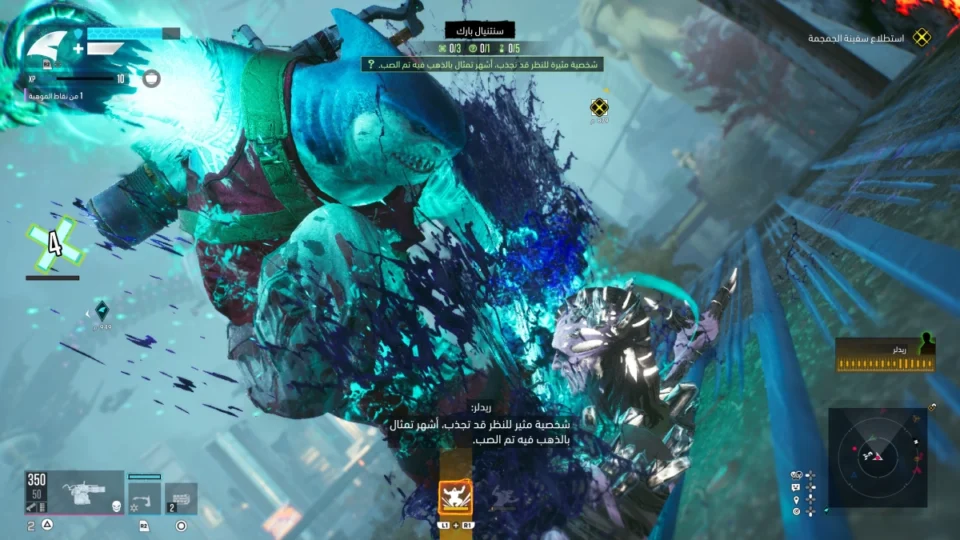
All of these types do not force you to change the way you fight or the way you deal with them, and they are all very similar types in their style of movement and artificial intelligence, which does not try to surprise you in any way, and when the game tries to provide a high level of difficulty, you push large numbers of them, or make Each enemy receives a large number of shots in order to be eliminated. This is common in service games, but its presence here, among other, more serious flaws, makes it unbearable.
Boss battles, which are supposedly what the game built itself on, and its entire name, were a bit of a let down. After all, you’re facing off against a group of superheroes with firearms. No matter how powerful these firearms are, in the end they are limited to aiming and shooting. This becomes exhausting after the first two hours, especially as the weapons only change in strength. Because the types of weapons themselves are poor and scarce, and there is no creativity in the design or working mechanism. I liked the boss battles on a visual level only, but in terms of design, they are your normal battles in shooting games belonging to the PS3 and Xbox 360 generation, and it is not right to see such a design in 2024.
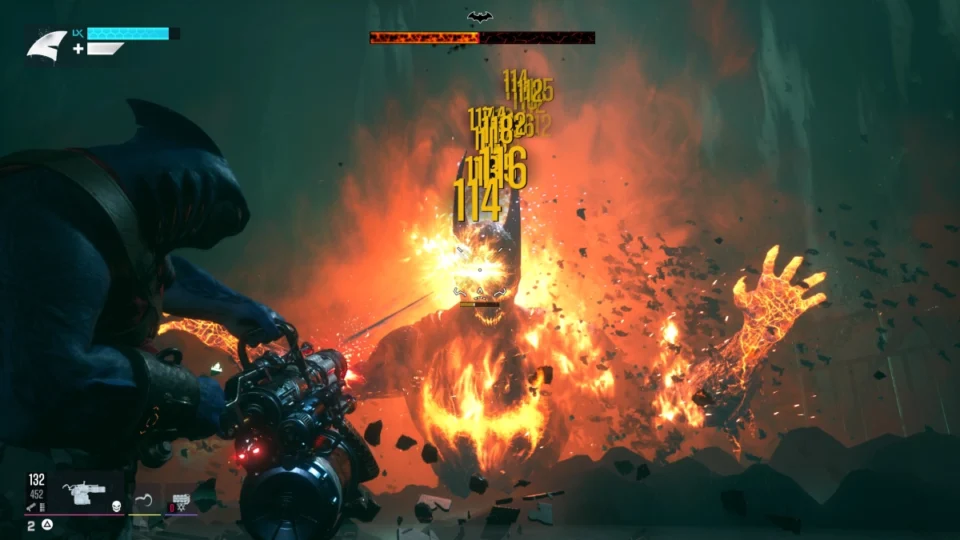 As for the skill tree, it was among the worst I have seen in the gaming industry in general. It was limited to maximizing the effects of hits, and improving the quality of armor and the speed of acquiring it, which is called buffs and cannot be considered a real upgrade, because in the end it only adds a few completely new movements.
As for the skill tree, it was among the worst I have seen in the gaming industry in general. It was limited to maximizing the effects of hits, and improving the quality of armor and the speed of acquiring it, which is called buffs and cannot be considered a real upgrade, because in the end it only adds a few completely new movements.
As for the side content, the character The Riddler returns here as well, but this time his missions are a race against time inside green rings, the goal of which is to finish them in a specific time and obtain an evaluation. Modest design and you will feel bored with the second mission. There are puzzles that the Riddler also poses to you, and all you have to do is solve them by looking at the object that represents the solution and performing a scan. This particular activity I found the most fun, but it doesn’t give you any extra points or any motivation to complete it.
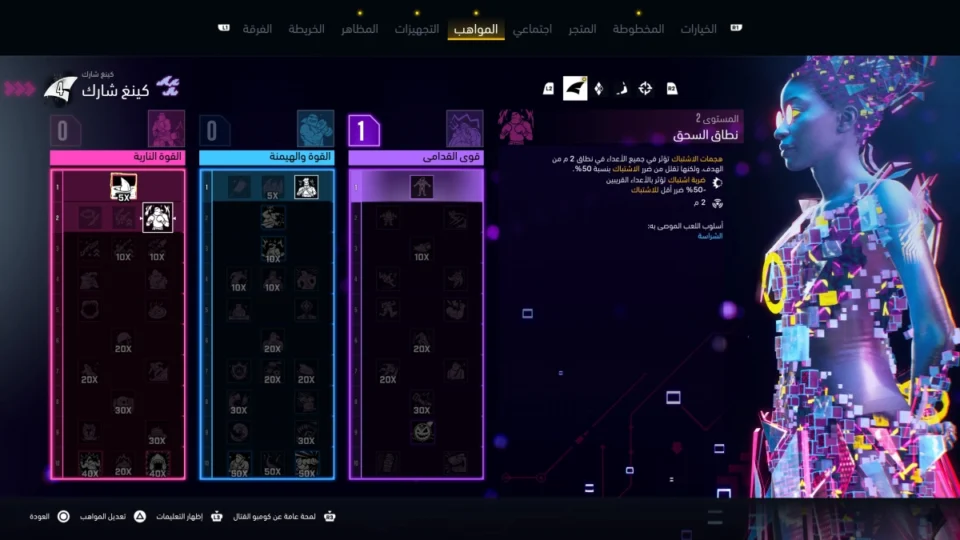
Visual and auditory experience
I cannot deny the beautiful artistic direction in the design of the city of Metropolis, which relies on a beautiful architectural style in the design of buildings and public places similar to the original Superman cartoon series, and this appears in the designs of large buildings such as the headquarters of LexCorp, the Justice League building, and the shapes of shop signs and movie theaters. The cinema, which glows with neon lights at night, as well as the commercials painted in a creepy, surreal art style, reminded me of the Fallout games.
In fact, I think that Suicide Squad: Kill The Justice League, while presenting a beautiful world visually, is a step back from the studio’s last game released 8 years ago, so I understand that may be a source of frustration for some. The world of Metroplus is beautiful, but it lacks the liveliness and feeling of a world that was once inhabited. I don’t understand the lack of population here when the capabilities of current technical hardware allow for more detail. In previous Rocksteady games I accepted this due to the limitations of previous generations, but here it affects the experience because despite the beauty of the world, there is no motivation to explore or wander through it.
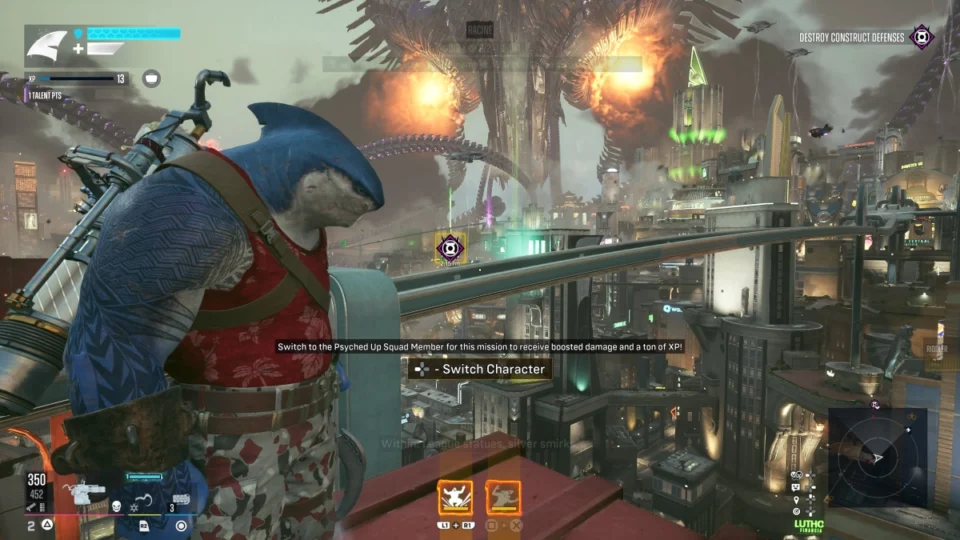
Cinematic clips, voice performances, and facial expressions contributed to creating a strong narrative experience, and are considered among the aspects in which the studio fulfilled its promises. The cinematic clips here are the longest in Rocksteady games throughout its history, and they are also the best in quality. The performances, especially those of King Shark, Harley Quinn, and Amanda Waller, were excellent and presented the closest thing to the Suicide Squad movie that everyone dreams of.
Localization and support for the Arab region
Suicide Squad: Kill The Justice League offers full support for the Arabic language, including translation of menus and dialogues. The translation was at an excellent level, and I did not notice any errors throughout my playing time.
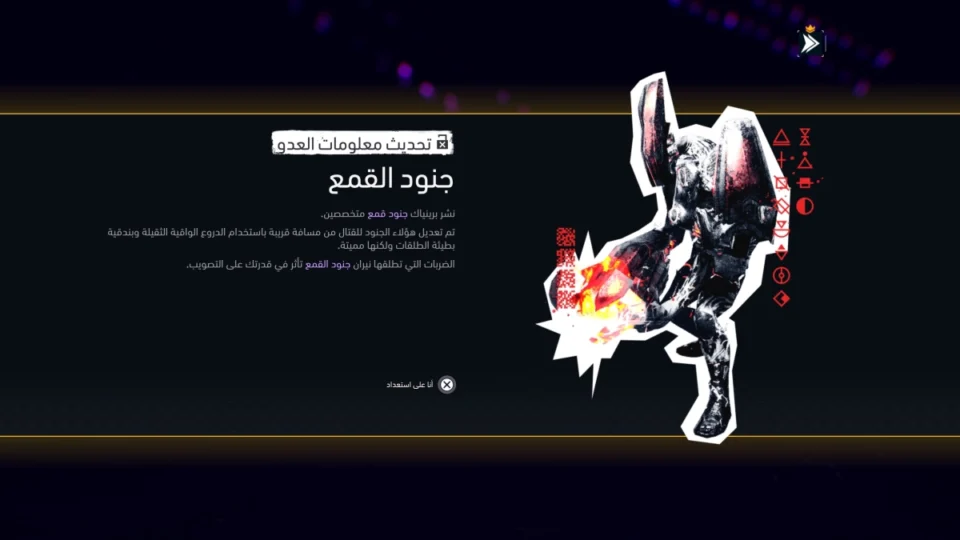
Team play:
I enjoyed playing alone more, although the game allows playing with 3 of your friends, but I wanted to enjoy the story and dialogues and be able to focus on them without side conversations with friends, and I also wanted to switch between characters, which is not possible during group play. You can switch between characters only at the beginning of the session, and then you have to complete it with the same character. Entering and exiting multiplayer and menu design was good, but we faced several connection problems during group play that greatly affected the experience, despite the strong Internet connection.
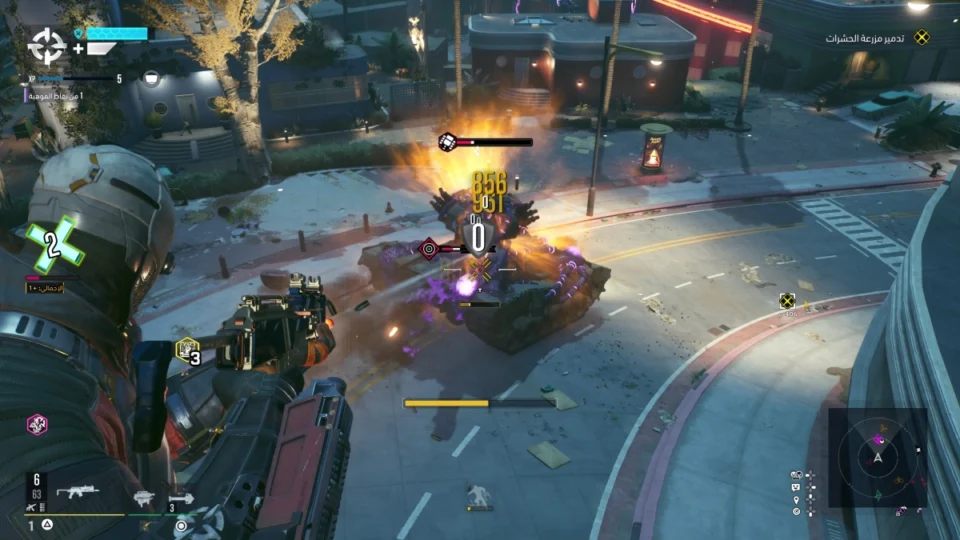
The game offers the ability to keep progress for all participants in the multiplayer session, not just the host, in addition to keeping the equipment and points you have acquired, but if you enter a game session at a late point in the story it will be annoying, because you may be at a lower level that does not qualify you to play smoothly. The game needs to constantly upgrade your equipment and character. For this reason alone, playing together with friends is important, because playing with random people won’t be fun. But on the other hand, don’t expect any kind of cooperation with friends because the mission design doesn’t try to exploit that in any way. There are no missions that encourage tactical cooperation or communication with other players.
Technical performance
We tried the game on PS5, and we got good technical performance most of the time, except that in some shots crowded with visual effects, we noticed the phenomenon of Screen Tearing and frame drops that clearly affected the experience.
By searching on the game’s website, the experience supports 1800 dynamic resolution with a frame rate of 60 frames per second, with no options in performance. In general, I feel that the game maintained the frame rate most of the time and I did not encounter problems like the ones I encountered with Gotham Knights at the time of release, for example.
last word
At the end of my experience with Suicide Squad: Kill the Justice League, I felt that what I had experienced for more than 30 hours was definitely not the project that the studio spent 7 years developing, as they confirmed in previous news . The studio’s lack of experience in this type of game is not an excuse for what we see before us now, because even the aspects of the story, world building, characters, and narrative are aspects that have clear and major flaws, which the studio would not have fallen into if it had developed the game with the same mentality that produced Batman Arkham for us.
Suicide Squad isn’t even a good story game except for the first half, but the second half ruins everything. Therefore, it’s not a game worth the full price, especially at a time as crowded with releases as the current one.
This game was reviewed with a PS5 version provided by the game publisher before its release

